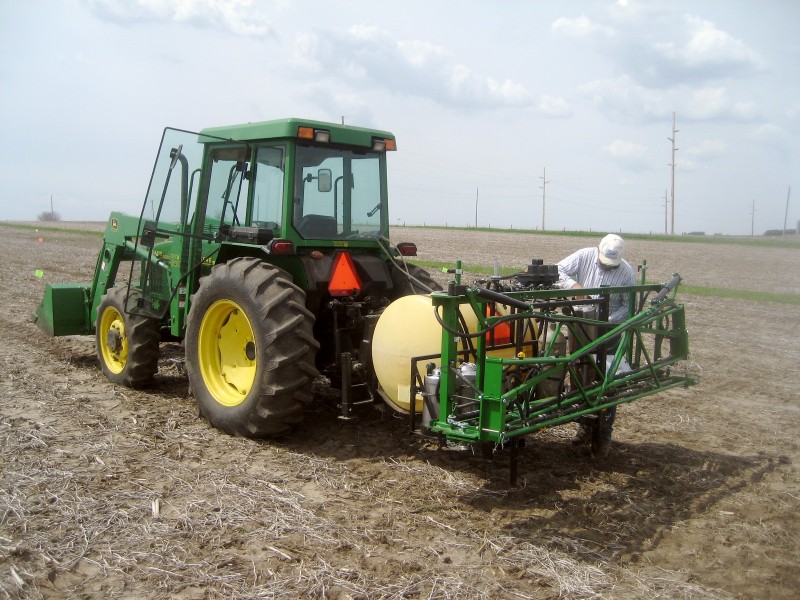 We provide equipment evaluations including:
We provide equipment evaluations including:
- Nozzle type and volume of spray studies
- Oriface size and type comparisons with products
- Speeds of application and varying pressures
Other equipment tests include planter-type seed drop with speed and type of planter. Comparisons of emergence and crop performance can be done with varying tillage conditions from no-till to plowing. The spraying studies with various nozzles are done with carbon dioxide as a pressure source from a large cylinder mounted on the sprayer. This provides for a constant pressure whether driving up or down hill.
The custom made sprayer is equipped with 11 nozzles on 15-inch centers and has a rack to accommodate up to seven different treatments at a time. A Bauer traveling gun can be used for rain off studies in a restricted area compared to a nearby non irrigated area. With foliar or in-furrow treatments the spray line is always blown out between treatments to insure proper application on the first plot. A pressure gauge near the end nozzle indicates when a pressure has been attained and one may proceed to spray.
Another type of testing is done on large pot-type containers outdoors. These containers are four feet high and three feet by three feet wide. The bottom of the container has 12 inches gravel and there is two feet of silt loam soil on top of the drainage bed. Below the drainage bed is an outlet to remove leachate and study effects on water quality or the loss of nutrients. These totes are the typical ones used for bulk containers and the tops have been removed. A pallet is placed under each one so they can be moved and could be placed inside our high tunnel.
So far we have been using them for continuous corn crop testing with three nutrient regimes and measuring nutrient uptake and loss. The corn plants look normal and we plant 18 plants in each container with three rows with six plants in each row. Each row is then harvested separately.

